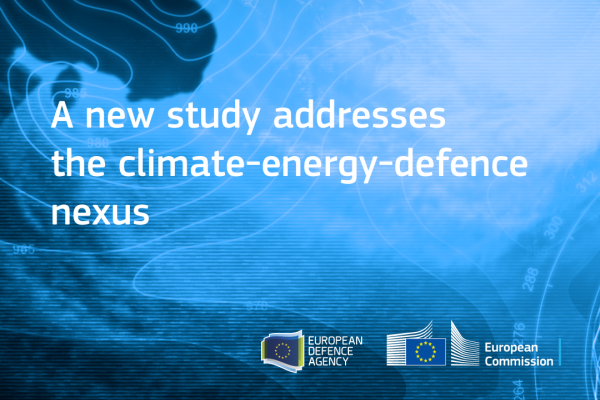
Hybrid threats pose a specific danger to the EU and other democracies, because they target core democratic processes and weaken citizens’ trust in their institutions and governments. In recent years, authoritarian regimes and non-state actors use hybrid threats to achieve their hostile, strategic objectives.
By combining different types of tools and organised actions, such as disinformation, economic pressure, abuse of migrants, cyber-attacks and other covert actions, hybrid threats are becoming more and more sophisticated. The EU and the Member States therefore need to increase their level of vigilance, preparedness and cooperation, as also outlined the Communication on the EU Security Union Strategy and A Strategic Compass for Security and Defence.
Hybrid threats are in fact expected to grow in frequency, impact, and scale in future – as we are already seeing for example with the Russian war in Ukraine, various election interferences as well as Brexit campaigns.
In response to the above-mentioned recent political initiatives, the Joint Research Centre of the European Commission (JRC) in partnership with The European Centre of Excellence for Countering Hybrid Threats (Hybrid CoE) outline in their recent report Hybrid threats: a comprehensive resilience ecosystem ongoing trends in hybrid threats, including what to expect in the future.
Moreover, as a tangible method for how to defend democratic societies against hybrid threats, the authors propose a ‘Comprehensive Resilience Ecosystem’ model, CORE. This model proposes for the first time a systems-thinking approach to help policymakers counter even complex hybrid threats in an efficient and coordinated way.
Finally, the report presents concrete recommendations for policymakers on how to address hybrid threats in practice.
What does the new CORE model offer?
To defend our democracies from hybrid threats effectively it is necessary to analyse our society in a comprehensive manner. This is because different parts of society are interconnected, meaning that attacks in one area also affect other areas, which is exactly what hostile actors wish to see. Hybrid threat actors usually target less resilient areas or “domains” of society as entry points for large-scale cascade effects, potentially leading to systemic failures.
The new CORE model developed by the JRC and Hybrid CoE takes this into account and is based on a ‘whole-of-society’ approach: it considers different “spaces” of society (e.g., governance, civic, services), different “levels” (international, national, and local), and, most importantly, their interactions.
It helps to show how hybrid threat activities, bit by bit, challenge democracies by introducing different types of pressure to the various elements (i.e. the spaces and levels) of the model. As such, the CORE model is a strategic dashboard for policymakers to decide which resources, tools and measures to mobilise in the face of hostile activities at EU, Member State or operational level.
Specifically, the CORE model:
- maps how malicious actors use various tools against different domains to reach their target;
- helps detect hostile activities and their intensity;
- monitors affected dependencies to avoid possible cascading effects;
- facilitates the anticipation of damage to our democracies; and
- assesses impacts of possible hybrid attacks and campaigns.
The ecosystem approach helps to spot early signals, facilitates their analysis and identifies responses to counter hybrid threats and build resilience.
The novelty of the CORE model is that it provides democratic policymakers with a hands-on methodology to estimate how authoritarian states or non-state actors employ hybrid threats activity to manipulate or destabilise democracies.
The CORE model may therefore be considered a blueprint for adaptive thinking, helping EU Member States understand how they - individually or collectively - can foster resilience and enhance their margin of manoeuvre when facing hybrid threats.
The CORE model will assist EU policymakers feed in the creation of the EU Hybrid toolbox announced in A Strategic Compass for Security and Defence.
In more practical terms, this document also will serve as the basis for the further work on the Sectoral Hybrid Resilience Baselines. The EU Security Union Strategy and the Commission contribution European defence underline the need to build resilience to protect the EU against hybrid threats and the importance to systematically track and objectively measure progress in this area.
With this in mind, the Council invited the Commission and the EEAS to continue the assessment of the sectoral resilience baselines by identifying gaps and needs as well as steps to address them, closely related to this new CORE model.
Background
As outlined in recent EU policy initiatives such as the Communication on the EU Security Union Strategy and A Strategic Compass for Security and Defence, we are seeing fast-moving developments and an increased level of complexity of hybrid threats. The Communication: Commission contribution to European defence also urgently called for a major boost to European resilience and defence against these threats.
This report builds upon prior work by The European Centre of Excellence for Countering Hybrid Threats (Hybrid CoE) and the Joint Research Centre, who jointly developed a conceptual framework for hybrid threats.
Throughout the elaboration of the report and the underpinning scientific work, the authors have been in dialogue with Member States, notably via the Horizontal Working Party on Building Resilience and Countering Hybrid Threats of the Council of the European Union, as well as with other key stakeholders.
Related content
Report Hybrid threats: a comprehensive resilience ecosystem
Communication on the EU Security Union Strategy
A Strategic Compass for Security and Defence
Communication: Commission contribution to European defence
The European Centre of Excellence for Countering Hybrid Threats
Hybrid CoE and the JRC launch a new model to build resilience against hybrid threats
Horizontal Working Party on Building Resilience and Countering Hybrid Threats
Details
- Publication date
- 20 April 2023
- Author
- Joint Research Centre
- JRC portfolios




